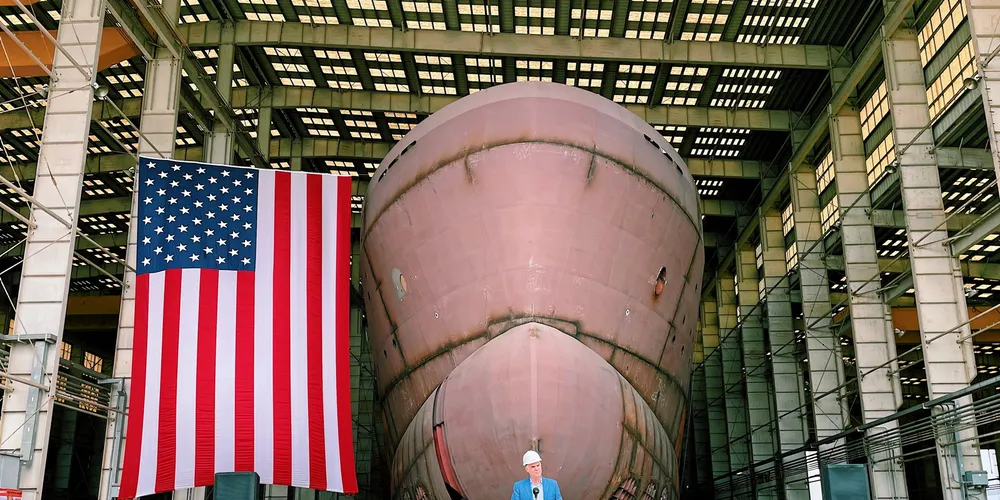The US’ first Jones Act-compliant service operations vessel (SOV), the 262-foot (80-metre) Eco Edison, has reached its halfway point in construction at the Edison Chouest shipyard in Louisiana.
The SOV is expected to be commissioned in 2024 for operations and maintenance of multiple projects underway by the joint venture (JV) of Danish developer Orsted and New England utility Eversource. This includes the
130MW South Fork near Long Island, the nation’s second fully permitted array that is slated to begin offshore construction later this spring.
"This shipyard and this vessel are living proof that American offshore wind energy is providing economic opportunity and creating jobs today across the country," said David Hardy, CEO Americas at Orsted.
The SOV is one of several vessels currently under construction by US shipyards for the burgeoning offshore wind sector since the Biden administration announced its
30GW by 2030 national target. US maritime engineering firm
Crowley and Danish offshore service provider Esvagt, operating as joint venture (JV) Crest, will design and engineer a 289-foot SOV to be built by Fincantieri Marine Group at its shipyard in Sturgeon Bay, Wisconsin for Dominion Energy’s nation-leading 2.6GW Coastal Virginia Offshore Wind (CVOW) array.
Last spring,
US-based Great Lakes Dredging and Dutch marine contractor Van Oord commissioned the Philly Shipyard of Philadelphia to build a 461 foot, $197m rock laying vessel for scour protection of Equinor-BP’s Empire Wind 1&2 offshore wind projects.
The
$500m Charybdis wind turbine installation vessel (WTIV) is under construction in Brownsville, Texas, for Dominion Energy of Virginia, while Danish shipper Maersk announced a
Singaporean-built WTIV for Equinor-BP’s Empire Wind project.
These projects are the vanguard of some
$2bn in port and specialist vessel investment already underway, but the sector will still fall far short of what's needed, according to the National Renewable Energy Laboratory (NREL).
The Jones Act, which places restrictions on foreign-flagged vessels operating in US waters, has added to fears over availability to meet America's big ambitions in wind at sea.
The US will need five to six WTIVs and heavy lift vessels as well as multiple specialised feeder barges to meet the national target, along with four cable laying vessels, more than 13 SOVs, and multiple crew transfer vessels.
NREL stressed that these investments “need to be planned early to obtain construction permitting and shipyard positions.
“Without planned and committed investment in marshalling ports and installation vessels, the US may miss the boat,” the study warned.
(Copyright)